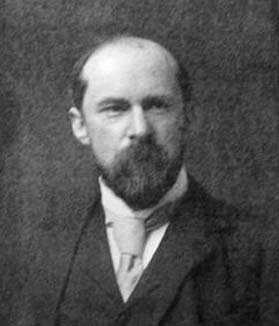


 تاريخ الرياضيات
تاريخ الرياضيات
 الرياضيات في الحضارات المختلفة
الرياضيات في الحضارات المختلفة 
 الرياضيات المتقطعة
الرياضيات المتقطعة
 الجبر
الجبر
 الهندسة
الهندسة 
 المعادلات التفاضلية و التكاملية
المعادلات التفاضلية و التكاملية 
 التحليل
التحليل
 علماء الرياضيات
علماء الرياضيات |
Read More
Date: 25-2-2017
Date: 19-2-2017
Date: 18-2-2017
|
Died: 1 April 1930 in Glasgow, Scotland

George Gibson's father was Robert Gibson, a Justice of the Peace, and George was his parents' third son. Robert Gibson had taught himself Latin to be able to carry out research for a book he wrote on the history of Greenlaw. George attended the Free Church School in Greenlaw until he was sixteen years old when he matriculated at the University of Glasgow. Although he entered in 1874, he only graduated with an M.A. in 1881. This was certainly not because of any lack of ability, for he came top of almost every class he took (in fact every class except Moral Philosophy), but rather it was due to ill health which caused him to miss two sessions. In fact Gibson married while still an undergraduate. In 1880 he married Nellie Stenhouse Hunter, the daughter of James D Hunter; they had three children who survived to adulthood.
Because of his health problems, Gibson only took an ordinary degree rather than an honours degree. In the following year he took the honours examinations and his performance was so outstanding that, in 1882, he was awarded the Euing Fellowship in Mathematics and Natural Philosophy. He was appointed as a Junior Assistant to William Jack, Professor of Mathematics at Glasgow University, in 1883, becoming a Senior Assistant to Jack in the following year. He took leave of absence in 1885 and travelled to Berlin where he attended lectures at the University. This was the period when the University of Berlin was at its height with Weierstrass, Kummer and Kronecker all giving outstanding lecture courses. Gibson remained an Assistant until 1891 when a new Ordinance came into force which meant that from November of that year he became a Lecturer in Mathematics. In 1895 Gibson was appointed as professor of mathematics at the Glasgow and West of Scotland Technical College (now Strathclyde University).
In 1909 Gibson was named professor at Glasgow University where he succeeded William Jack. He continued to hold this post until he retired due to ill health in 1927. He published several excellent textbooks, for example An Elementary Treatise on the Calculus, An Elementary Treatise on Graphs, and A First Course in Calculus, based on Graphic Methods. He was also recognised as a leading authority on the History of Mathematics.
Gibson was very active in supporting mathematics in Scotland. He was an active member of the Edinburgh Mathematical Society and was President of the Society 1888-89. In 1902 he was made an Honorary Member of the Edinburgh Mathematical Society. He was elected to the Royal Society of Edinburgh on 2 December 1889 having been proposed by Sir William Thomson (Lord Kelvin), William Jack, Sir Thomas Muir, and George Chrystal. He served on the Council of the Society during 1905-8 and again in 1912-13. He was Vice-President of the Society during 1917-20. He was also honoured with an Hon LL.D from Edinburgh University in 1905, and a similar degree from Glasgow University in 1927.
After Gibson's death his friends raised funds to endow a lecture on the history of mathematics, to be given about every four years. The first lecturer was A Einstein in 1930, and later speakers have included Turnbull, Coulson, and Collingwood.
Articles:



|
|
|
|
دراسة يابانية لتقليل مخاطر أمراض المواليد منخفضي الوزن
|
|
|
|
|
|
|
اكتشاف أكبر مرجان في العالم قبالة سواحل جزر سليمان
|
|
|
|
|
|
|
اتحاد كليات الطب الملكية البريطانية يشيد بالمستوى العلمي لطلبة جامعة العميد وبيئتها التعليمية
|
|
|